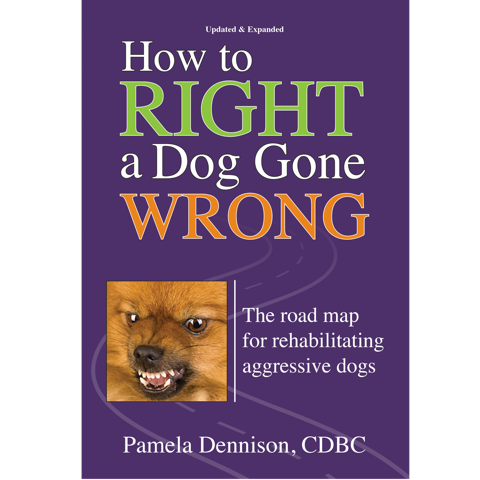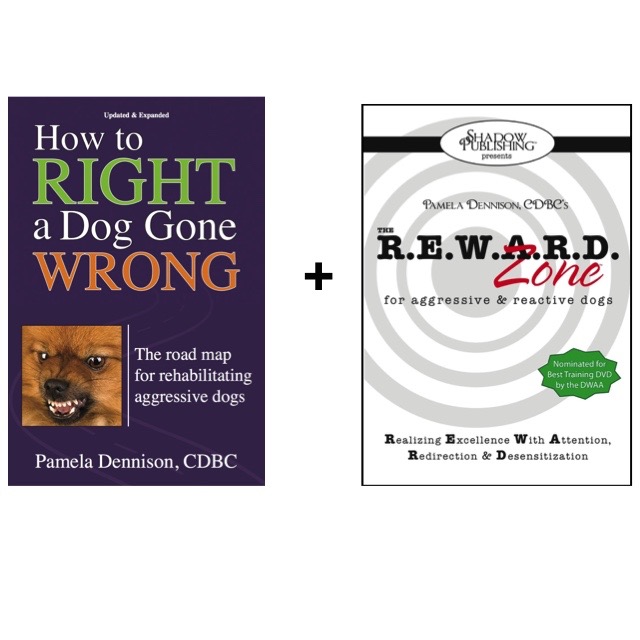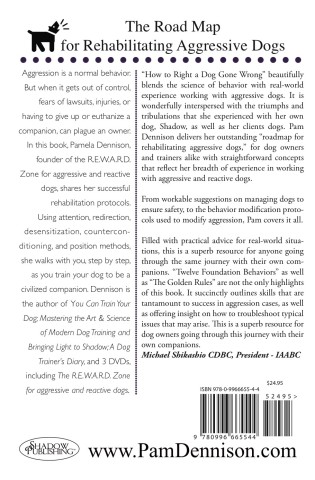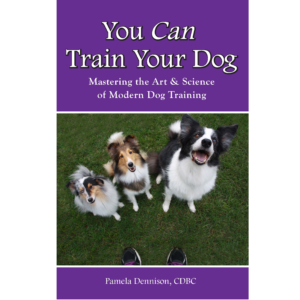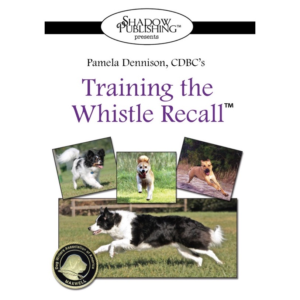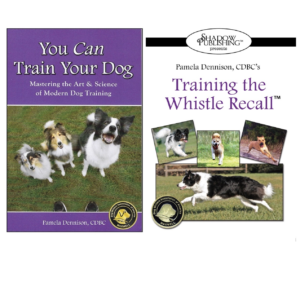Description
The Updated & Expanded Edition of “How to Right A Dog Gone Wrong; the road map for rehabilitating aggressive dogs,” by Pam Dennison CDBC!
A lifetime of training teaches you a great deal. When almost half of that lifetime is working with aggressive dogs, you learn a lot more.
Here’s an excerpt:
Does your dog have an aggression problem? Take this simple quiz:
Would you rather parachute into enemy territory with the Navy SEALS than take your dog for a walk?
Do you only go out with your dog at midnight or 4 a.m. and wish you had an infrared camera to detect and then avoid anyone else who might be around?
Do you stop breathing or panic when someone approaches? (Do you ever breathe at all when you are walking your canine buddy?)
Have you rearranged your entire life to make sure that your dog doesn’t see (and subsequently attack) other dogs or people?
Are you embarrassed by the way your dog behaves when people come to your house?
Are people nervous when they come to your house?
Do people still actually come to your house?
Do you worry about losing your home insurance if the insurance company finds out you have a dog that throws himself at the door in a frenzy whenever someone rings the doorbell?
Do you get tired of coming up with clever responses to people who scream, “You should learn to control that dog!”
Do you feel like a failure because your dog growls and/or lunges at people or dogs?”
If you said yes to these, you need this book! Don’t hide in the darkness any longer. Answers are within reach.
Pam on DogCast radio, talking about aggression and the book! Click here to listen!
The original edition was Nominated by the DWAA for the HSUS Compassionate Care Award for the 2005 writing contest!
Reviews!
“How to Right a Dog Gone Wrong” beautifully blends the science of behavior with real-world experience working with aggressive dogs. It is wonderfully interspersed with the triumphs and tribulations that she experienced with her own dog, Shadow, as well as her clients dogs. Pam Dennison delivers her outstanding “roadmap for rehabilitating aggressive dogs,” for dog owners and trainers alike with straightforward concepts that reflect her breadth of experience in working with aggressive and reactive dogs.
From workable suggestions on managing dogs to ensure safety, to the behavior modification protocols used to modify aggression, Pam covers it all.
Filled with practical advice, this is a superb resource for anyone going through the same journey with their own companions. “Twelve Foundation Behaviors” as well as “The Golden Rules” are not the only highlights of this book. It succinctly outlines skills that are tantamount to success in aggression cases, as well as offering insight on how to troubleshoot typical issues that may arise. Michael Shikashio CDBC, President – IAABC
Let’s hope Pam Dennison’s “How to Right a Dog Gone Wrong” does not become a literary secret because it contains all the information, tools and resources to help pet owners and professionals work through the process of helping deal with challenging dog aggression cases.
I was first introduced to “How to Right a Dog Gone Wrong” in 2010 when I found myself the proud foster home to an Australian Shepherd dog with serious issues. In my search for case studies and any literature that would help me deal with my new foster dog I came across the first edition of Dennison’s book and found it full of great tips and solid advice written to support and help those in similar situations to the one I found myself in. Now in its second edition I was delighted to reacquaint myself with this valuable resource and ferret out all of the new pearls of wisdom and advice. I found the latest edition nothing less than an essential resource for any parent, foster home, trainer or rescue worker who has taken on the daunting challenge of “righting a dog gone wrong.”
From the outset Dennison takes us on an expedition into aggression by defining it and helping the reader to understand its origin, purpose and necessity to a species survival. As any book on aggression should do the “labeling syndrome” is addressed very early on with recommendations to, simply state what the dog is reacting to rather than stratify the behavior into one of numerous aggressive labels. This provides us with a common understanding that can be shared. Dennison does an exceptional job of identifying the causes of aggression including discussions on accidental reinforcement of inappropriate behaviors as well as those resulting as fallout from the application and use of positive punishment. Dennison also provides a healthy dose of canine communication including the subtle and early onset signs of aggression. Throughout her book Dennison emphasizes supporting pet owners to address their pet’s problems by highlighting that “the overriding element critical to success in working with your aggressive dog is your own recognition and acceptance of your dog’s issues and dedication to helping him overcome them.”
“How to Right a Dog Gone Wrong” also accommodates the needs of puppy owners and solutions can be found throughout the book to support the key goal of prevention being the best cure. Dennison provides solid recommendations in all shapes and sizes from management and training activities to common-sense safety protocols. I particularly commend the no-nonsense emphasis on a philosophy of “get rid of the old dominance role model—it really doesn’t matter. Let’s work with the behaviors we need, rather than getting stuck in a debate that ultimately is pointless.”
“How to Right a Dog Gone Wrong” does an exceptional job of explaining to pet owners and professionals how pets learn and the 12 foundation behaviors needed to help prepare you for, and facilitate, the necessary counter conditioning and desensitization programs. All of these are clearly and expertly described and explained. Spoiler Alert: Pay particular attention to the first five foundation behaviors and the nine well thought out “Golden Rules.” These will reinforce your learning and help you develop your own program to help you “Right a Dog Gone Wrong.” A highly recommended read.
Niki Tudge PCBC-A, CDBC, CDT
Dip, ABT. Diploma. Animal Behavior Technology. Dip, CBST. Diploma Canine Behavior Science and Technology. Certified People Trainer. ITB. TS1, TS2 & TS3. Certified Facilitator – Acuity Institute. Author – People Training Skills for Pet Professionals, Founder & President of The Pet Professional Guild, DogSmith Dog Training and Pet Care Licensing and DogNostics E-Learning. President Doggone Safe.
“How to Right a Dog Gone Wrong” is the most essential tool in my weekly Reactive Dog Classes. I believe that this book is a must read and I implement the methods Pamela Dennison so thoughtfully and clearly outlines in her latest book. It updates and expands my knowledge base as a Professional Certified Positive Reinforcement Trainer (CPDT-KA). For those of us constantly challenged with helping the reactive and aggressive dog(s) that come into our training and our lives, this book carefully guides me through the training process. By clearly giving us the goals and how to plan for implementation of those goals, it all goes smoothly! This book is a must read for not only trainers, but for handlers and owners who want to build the confidence and the connection to enable our dogs to live a full and stress-free life in our homes and in our towns. Thank you Pamela for teaching me how to teach my classes with grace and with confidence and bringing so much relief to dogs everywhere.”
Trainer/Owner, Jody Haas Wolfson, ROOT Dog Training
“Finding Pamela Dennisons book How To Right A Dog Gone Wrong, was a godsend when I realised that my baby Aussie was dog reactive. His world was becoming smaller and smaller. He was labelled nasty by my peers, who expected me to punish him viciously every time he lunged at another dog. This book taught me to have empathy with my dog, to be his protector, to be sure not to allow him to be blindsided and to always, always to watch for his signals that he was becoming overwhelmed and to honour those signals. Managing the world around Ice eventually became as natural as breathing for me and Ice earned his Silver Canine Good Citizen title and won a few Best Neuter in Specialist Show (at our own Club grounds where he always felt safe). The trust that we developed between us opened many doors, and Ice and I spent ten happy years sharing many experiences until his passing aged 10 1/2 last October. Thank you for this wonderful book.” Lynn Scholtz
I am a Professional Pet Sitter and Pam’s book, “How to Right a Dog Gone Wrong” has helped me tremendously to understand and deal with the problem dogs I so often see. I recommend this book to all my clients with reactive and aggressive dogs.
Kirsten Murphy, Hackettstown NJ
This book transformed the way I think about dog training. I have PTSD from the last basic obedience class I was in. Everything the trainer said in class was contradictory to what was in the book. I quit going to the classes. Since my dog is aggressive towards some dogs he never should have been in a group class. Also, aggressive dogs should never be corrected. Get rid of the 6 foot leash and use a long line. Sniffing is good for your dog. So many things I didn’t know. We’re both enjoying our training sessions now. They are all positive training now. No training collar, spray bottle or penny can. No pressure on his neck. D. Penland
Read the review by Captain Haggerty
Read the review by Janine Adams
See more HTWDGWReviews
A few REVIEWS from Amazon:
This book transformed the way I think about dog training. I have PTSD from the last basic obedience class I was in. Everything the trainer said in class was contradictory to what was in the book. I quit going to the classes. Since my dog is aggressive towards some dogs he never should have been in a group class. Also, aggressive dogs should never be corrected. Get rid of the 6 foot leash and use a long line. Sniffing is good for your dog. So many things I didn’t know. We’re both enjoying our training sessions now. They are all positive training now. No training collar, spray bottle or penny can. No pressure on his neck.
It reminded me of all the training I went through with my first 2 dogs, and gave me much needed guidance and explanation as to why my current dog has become lead aggressive. I just wish I had read it 2 years ago when all the signs were there but I didn’t understand what ‘she, my dog, was telling me’. Now it’s a long road to retraining & recovery for her and me…
Written in the author’s inimitable style, full of information but entertaining and suitable for all levels of experience.

